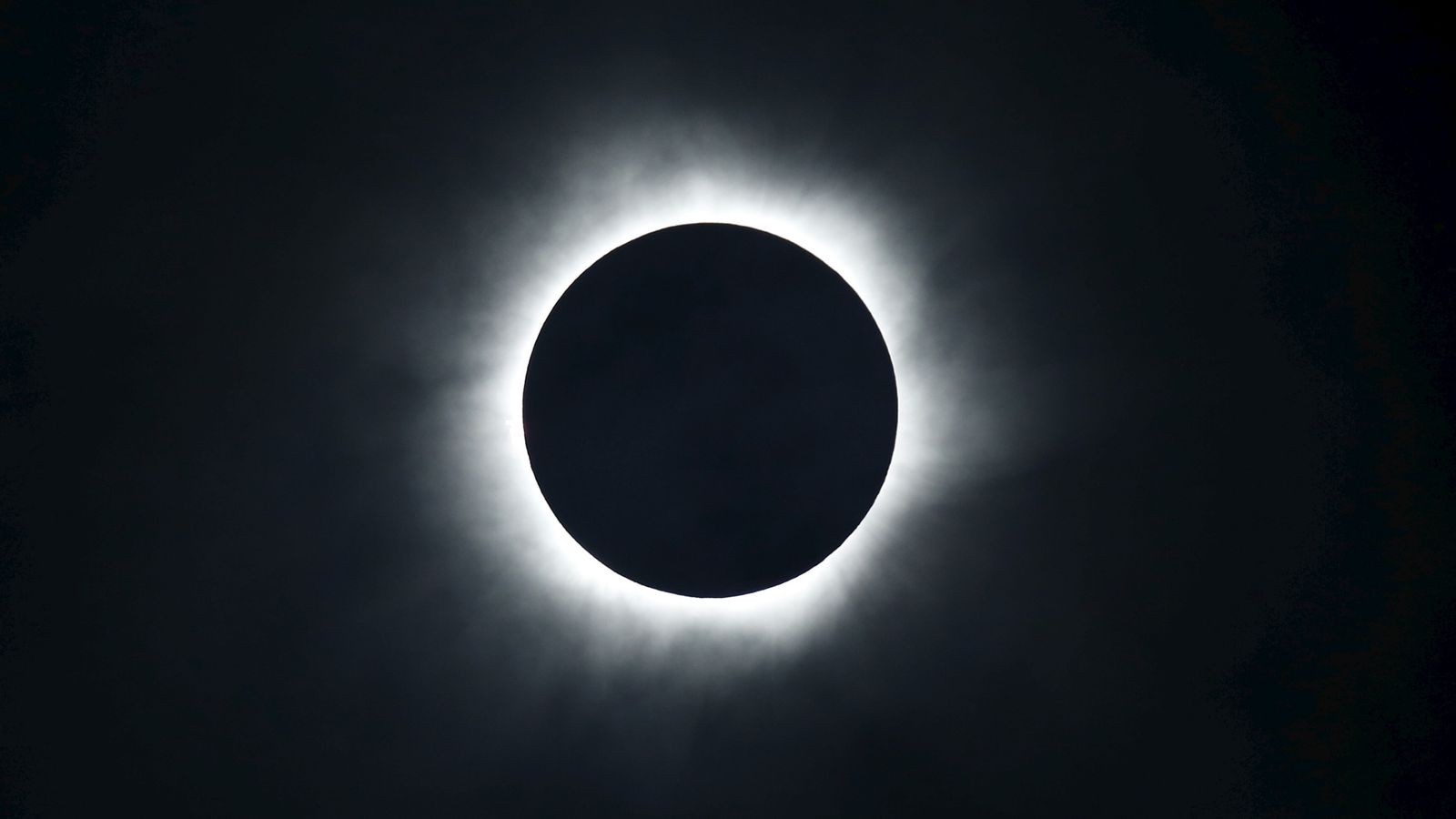It is only meant to happen once every 375 years or so on any one place in the world – but the perfect alignment of Earth, the sun and the moon will be stunning viewers in Illinois, US, for the second time in less than a decade.
Thousands of people are set to flock to the midwestern state on 8 April for the total solar eclipse, a celestial event described by an astronomy expert as “our planet’s greatest spectacle”.
The US, Mexico and Canada will be in the totality path of the eclipse, meaning more than 31 million people across 15 states will be treated to the mesmerising sight of the sun being obscured by the moon.
The event will see the sky fall dark and a halo forming around the Sun as its light is blocked out by the moon.
But for the 21,000-strong city of Carbondale, Illinois, it will be the second time the phenomenon occurs in just seven years, following a total solar eclipse in August 2017.
Professor Chris Lintott, University of Oxford, told Sky News he was “very jealous” of the people of Illinois’s unique opportunity.
“A total solar eclipse is one of the grandest sights in nature – and may be very rare anywhere in the galaxy,” Professor Lintott said.
“Everyone should try and see at least one in their lifetime. It’s our planet’s greatest spectacle.”
The astrophysics professor said a total eclipse is only expected to occur, on average, once every 375 years in any single location, making the events in Illinois extremely rare.
“Southern Illinois is considered the eclipse crossroads of America because it was in the centerline for the path of totality in 2017 and will be again in 2024,” the Illinois Department of Natural Resources said.
Read more from Sky News:
US to call for ‘immediate and sustained ceasefire’ in Gaza at UN Security Council
UK anti-hunting bill is revival of ‘colonial conquest’, says Botswana president
In the UK, an eclipse will be viewed across 90 per cent of the country in 2026, but it won’t be a total one until 2081 in the Channel Islands or 2090 in the South West.
“I get a shiver down my spine every time, and the memories of the eclipses I’ve seen will last a lifetime,” Professor Lintott said.
Be the first to get Breaking News
Install the Sky News app for free
According to NASA, the first location in North America where people will be able to view the eclipse in totality on 8 April will be Mexico’s Pacific coast at around 11:07 a.m. PDT.
The eclipse’s path will then enter the United States in Texas and travel through Oklahoma, Arkansas, Missouri, Illinois, Kentucky, Indiana, Ohio, Pennsylvania, New York, Vermont, New Hampshire, and Maine.
Small parts of Tennessee and Michigan will also experience the total eclipse, before the path moves onto Canada in Southern Ontario, Quebec, New Brunswick, Prince Edward Island, and Cape Breto. Its last sighting will be in Newfoundland.






















